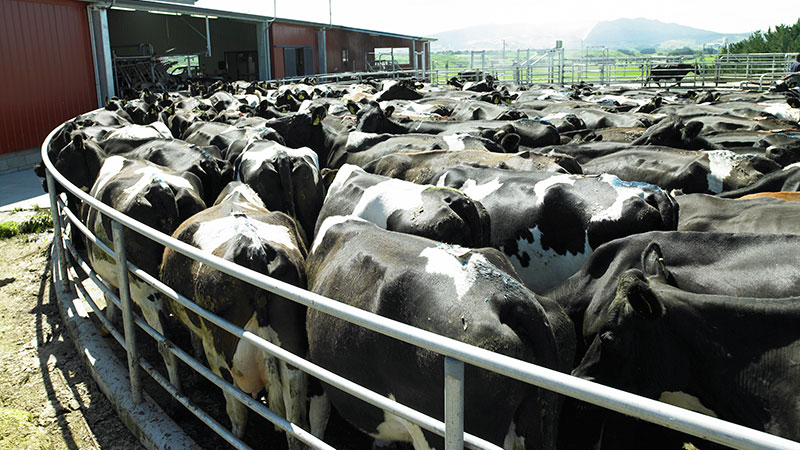Backing gates
3 min read
Backing gates are tools used in the dairy yard to improve cow flow into the dairy, leading to more efficient milking. It’s important to move the gate little and often to take up space in the yard, while still providing cows enough room. There are different design options, each with their own recommendations for gate movement, speed and length. When selecting the right design, provide guidelines and staff training to ensure it’s used appropriately on your farm.
If a backing gate is well designed and used correctly it can help to improve cow flow into the dairy. This will result in more efficient milking and milkers will have no need to go into the yard to bring cows in.
There are many different gate designs. When selecting a gate design, function and cost should all be considered.

Dual backing gates for managing multiple mobs in a round yard

High-lift backing gate for rectangular yard
How fast should the gate move?
Whenever the gate is being used to shift cows forward it should be moved very slowly (0.5m/5sec in a rectangular yard, 1m/5sec in a circular yard) to avoid stressing cows.
This becomes even more important as the gate length in a round yard increases. The gate can be moving quite quickly at the edge of the circle, yet the cows at the centre of the yard barely move, making continual mixing/moving of cows past each other a potential problem.
There is a tendency for cows on the edge of the circle to jam up against the fence, in herringbone fashion, as they gaze across the surrounding countryside.
Find out how quickly your gate moves:
How long should the gate be?
There is no specific limit as to gate length although the following points apply:
Scraping the yard surface with backing gate attachments, such as a Dung Buster, will reduce the volume of water required to break up and remove manure. Simple backing gate attachments can be made from rubber or wood and chains. See more detail on yard cleaning.

Cows correctly held in a yard. This allows them to keep their heads down without forced interactions and they can move into their milking order.

Cows too tight in a yard. This will lead to stress, bullying and lameness.